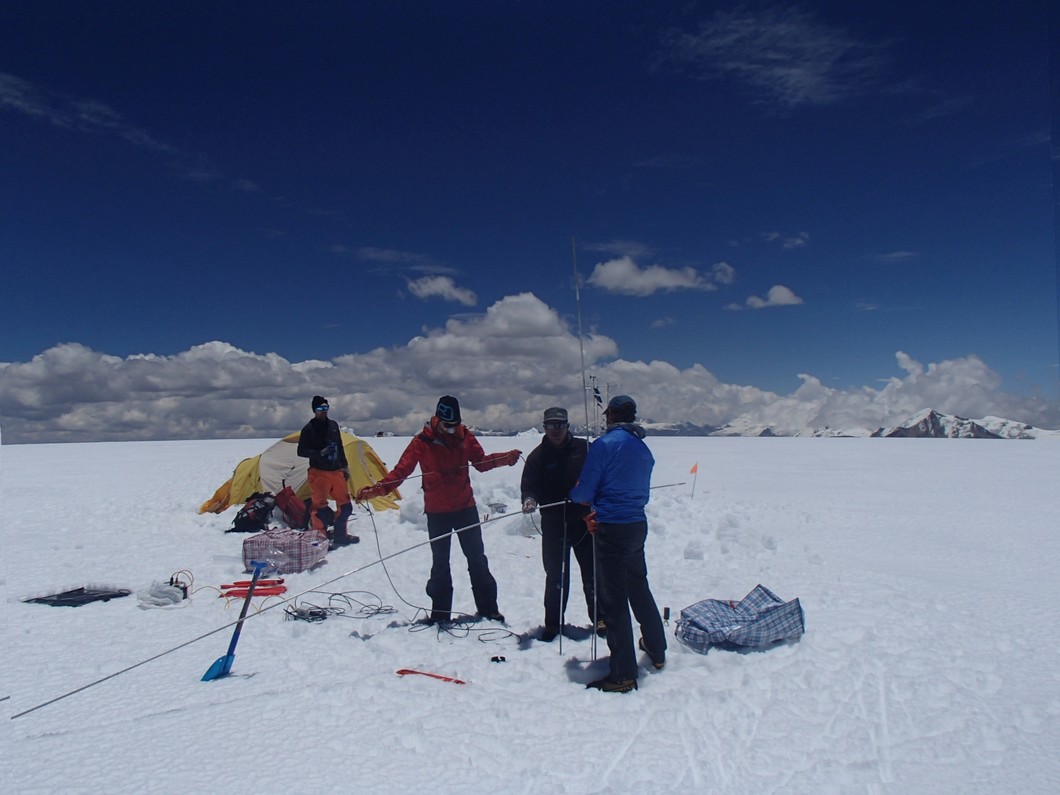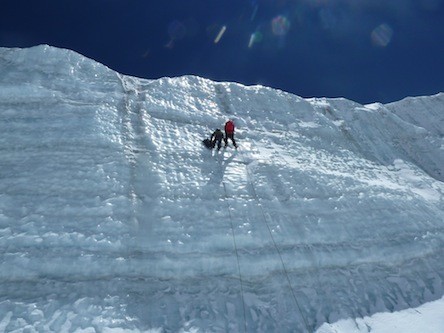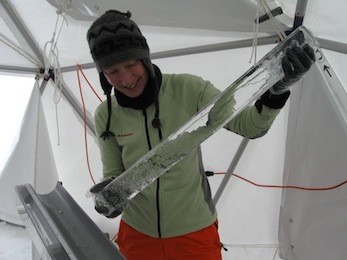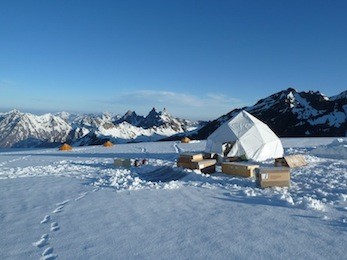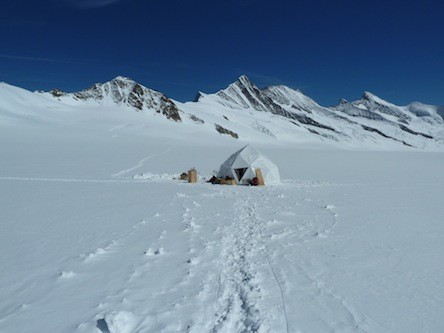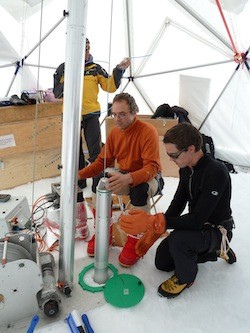Reconstruction of palaeoclimate and palaeoatmospheric composition from high-altitude glaciers.
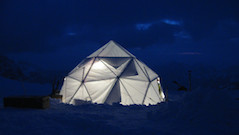
Reconstruction of environmental and climatic conditions from high-altitude glaciers. An important question in climate research is whether the magnitude and rate of the 20th century climate and environmental change exceeds the natural variability over the last millennium.
Our goal is the reconstruction of environmental and climatic conditions from high-altitude glaciers.
Shallow firn core from the Quelccaya Ice Cap
The Quelccaya Ice Cap in Peru is the largest tropical ice cap on Earth, located between the high Andean Altiplano and the Amazon Basin. This glacier has been studied for more than 40 years and ice cores were drilled to bedrock in 1983 and 2003 by Lonnie Thompson’s group from the Ohio State University. Since 2003 an automated weather station (AWS) is operational on the summit. Snowfall at this site is highly associated with the South American summer monsoon (SASM) which is of great socioeconomic relevance to sub-tropical South America. This is the focus of a NSF project lead by Mathias Vuille (University at Albany) aiming at a comprehensive climatological history of the SASM for the last 1000 years.
In the frame of this project we conducted a field campaign in October 2014 in collaboration with Douglas Hardy from the University of Massachusetts. The goal was to extend the 2003 ice core record to the present in overlap with the period of available AWS data. With our Backpack Drill we established a new depth record and collected 21 m of good quality ice core (13.93° S, 70.82° W, 5660 m a.s.l.). Transported frozen to our lab, the ice is now being analyzed for stratigraphic features, density, stable isotopes of water and concentrations of chemical impurities. Results will show soon if we succeeded to reach back to the 2003 layer. For more details and news, check out Douglas Hardy´s blog.
In the frame of this project we conducted a field campaign in October 2014 in collaboration with Douglas Hardy from the University of Massachusetts. The goal was to extend the 2003 ice core record to the present in overlap with the period of available AWS data. With our Backpack Drill we established a new depth record and collected 21 m of good quality ice core (13.93° S, 70.82° W, 5660 m a.s.l.). Transported frozen to our lab, the ice is now being analyzed for stratigraphic features, density, stable isotopes of water and concentrations of chemical impurities. Results will show soon if we succeeded to reach back to the 2003 layer. For more details and news, check out Douglas Hardy´s blog.
What's the age of the ice on Kilimanjaro?
The age of the plateau glaciers on Kilimanjaro’s highest peak, Kibo, is currently debated. While Thompson et al. (2002) regard them as a persistent feature of the Holocene disappearing due to rising 20th century temperatures, Kaser et al. (2010) suggest typical ‘life cycles’ of the ice of only a few hundred years caused by precipitation changes. In order to date Kilimanjaro’s ice with our new radiocarbon method, we collected horizontal ice samples from a 30 m high vertical ice wall of the Northern Ice Field. 24 horizons characterised by different particle contents were selected and two short cores were obtained from each horizon using a battery drill operated by two scientists belayed by top rope. The ice was transported frozen, is now being analyzed and first results are expected soon. The expedition was conducted in collaboration with Douglas Hardy, University of Massachusetts, who measured mass balance stakes and serviced the weather station on the Northern Ice Field Project Website
Surface-to-bedrock ice core from Silvretta glacier
From 20 to 25 April 2011 we recovered a 101 meter surface-to-bedrock ice core from Silvretta glacier (46°50’47’’ N, 10°05’79’’ E, 2927 m a.s.l.) in the Swiss Alps. Silvretta glacier is temperate with ice temperatures near the melting point between ca. 10 m below surface and bedrock. Temperate ice contains 0.1% to 2% liquid water, mostly at grain boundaries. The upper 12 m were drilled electromechanically and for the deeper 89 m our new thermal drill was used. The ice core from Silvretta glacier is being analysed in the frame of the SNF-Project „Accelerated release of persistent organic pollutants (POPs) from Alpine glaciers“ in order to investigate the transport of POPs within temperate ice and and quantify their release by melting. This is a collaborative effort, involving scientists from PSI, University of Bern, ETH Zurich, EAWAG, and EMPA.
First ice core from temperate Ewigschneefeld
On 12 September 2010 our team finished ice core drilling at 57 m depth on Ewigschneefeld (46°33’ N, 08°01’ E, 3462 m a.s.l.) in the Swiss Alps. Ewigschneefeld is a temperate glacier, containing a water table at about 21 m depth. The upper 31 m were drilled electromechanically and for the deeper part our new thermal drill was used www.icedrill.ch. The new drill produced ice cores of excellent quality even in the water-filled borehole. The ice core from Ewigschneefeld is being analyzed in the frame of the SNF-Project „Accelerated release of persistent organic pollutants (POPs) from Alpine glaciers“ in order to investigate the transport of POPs within temperate ice and quantify their release by melting.
